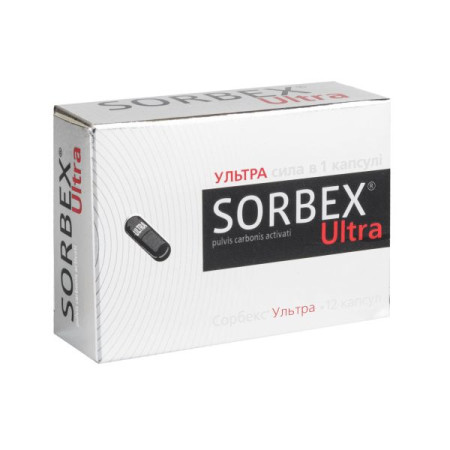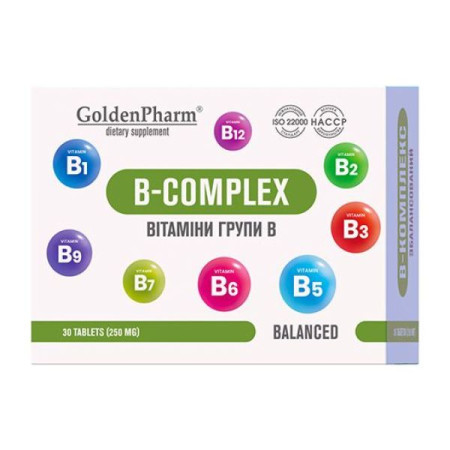Ferrum Lek chewable tablets 100 mg No. 30

Instructions for use Ferrum Lek chewable tablets 100 mg No. 30
Composition
active ingredient: 1 tablet contains 100 mg of iron (III) in the form of a complex of iron (III) hydroxide with polymaltose;
excipients: polyethylene glycol (macrogol 6000), aspartame (E 951), chocolate essence, talc, dextrates.
Dosage form
Chewable tablets.
Main physicochemical properties: tablets are brownish-white with inclusions, round, flat, with beveled edges.
Pharmacotherapeutic group
Antianemic agents. Iron (III) preparations for oral administration. ATC code B0ZA B05.
Pharmacological properties
Pharmacodynamics.
The preparation contains iron in the form of a polymaltose complex of iron (III) hydroxide. This macromolecular complex is stable and does not release iron in the form of free ions into the gastrointestinal tract. The structure of the preparation is similar to the natural iron compound - ferritin. Due to this similarity, iron (III) enters the blood from the intestine by active absorption. The absorbed iron binds to ferritin and is stored in the body, mainly in the liver. Later, in the bone marrow, it is included in the composition of hemoglobin. The iron preparation has the form of a polymaltose complex of Fe3+ hydroxide. Externally, the multinuclear centers of Fe3+ hydroxide are surrounded by many non-covalently bound polymaltose molecules, forming a complex with a molecular weight of 50 kDa, which is so large that its diffusion through the membranes of the intestinal mucosa is approximately 40 times lower than that of Fe2+ hexahydrate. Iron, which is part of the polymaltose complex of iron (III) hydroxide, does not exhibit the pro-oxidant properties inherent in simple iron salts. The susceptibility of very low density lipoproteins and low density lipoproteins to oxidation is therefore reduced.
Pharmacokinetics.
A study using the double isotope technique (55Fe and 59Fe) showed that iron absorption, measured by the level of hemoglobin in erythrocytes, is inversely proportional to the dose of the drug administered (the higher the dose, the lower the absorption). There is a correlation between the degree of iron deficiency and the amount of iron absorbed (the higher the iron deficiency, the better the absorption). The most active absorption process occurs in the duodenum and small intestine. Iron that is not absorbed is excreted in the feces. Iron excretion, which occurs during desquamation of the epithelium of the digestive tract and skin, as well as with sweat, bile and urine, is only 1 mg per day. In women, it is also necessary to take into account iron loss during menstruation.
Indication
Treatment of iron deficiency without anemia (latent iron deficiency) and iron deficiency anemia (clinically expressed iron deficiency).
Iron deficiency and its severity must be confirmed by appropriate laboratory tests.
Contraindication
Hypersensitivity or intolerance to the active substance or any component of the drug; excessive iron content in the body (e.g., hemochromatosis, hemosiderosis); disorder of iron excretion mechanisms (lead anemia, sideroachrestic anemia, thalassemia); anemias not caused by iron deficiency (e.g., hemolytic anemia, megaloblastic anemia caused by vitamin B12 deficiency); esophageal stenosis and/or other obstructive diseases of the digestive tract; intestinal diverticulum, intestinal obstruction, regular blood transfusions; simultaneous use of parenteral forms of iron.
Interaction with other medicinal products and other types of interactions
Studies in rats using tetracycline, aluminum hydroxide, acetylsalicylic acid, sulfasalazine, calcium carbonate, calcium acetate, calcium phosphate in combination with vitamin D3, bromazepam, magnesium aspartate, D-penicillamine, methyldopa, paracetamol, and auranofin did not reveal any interactions with iron (III) hydroxide polymaltose complex.
In vitro studies have shown no interaction with food components such as phytic acid, oxalic acid, tannin, sodium alginate, choline and choline salts, vitamin A, vitamin D3 and vitamin E, soybean oil and soybean flour. The results of the study indicate that iron (III) hydroxide polymaltose complex can be taken with or immediately after meals.
The interaction of polymaltose iron (III) hydroxide complex with tetracycline or aluminum hydroxide was studied in three clinical studies (cross-over studies involving 22 patients for each study). No significant decrease in tetracycline absorption was observed. Plasma tetracycline concentrations did not fall below the level required for efficacy. The use of aluminum hydroxide and tetracycline did not reduce the absorption of iron from polymaltose iron (III) hydroxide complex. Therefore, the drug can be used simultaneously with tetracyclines, other phenolic compounds and aluminum hydroxide.
The use of the drug does not affect the results of the test for detecting occult blood (sensitive to hemoglobin), so there is no need to stop treatment with the drug.
Application features
Treatment of anemia should always be carried out under the supervision of a physician. If there is no improvement in hematological parameters (an increase in hemoglobin level of approximately 20–30 g/l 3 weeks after the start of treatment), the treatment regimen should be reviewed.
Caution should be exercised in patients receiving repeated blood transfusions, as red blood cells already have a store of iron, and administration of the drug may lead to iron overload.
If anemia is caused by infection or tumor, the iron administered to the body accumulates in the reticuloendothelial system and is not utilized. Therefore, oral iron preparations can be taken after the underlying disease has been cured, taking into account the benefit/risk ratio.
When prescribing the drug to patients with diabetes, it should be taken into account that 1 chewable tablet contains 0.04 bread units.
1 tablet contains 1.5 mg of aspartame (a precursor of phenylalanine), which should be taken into account when prescribing the drug to patients with phenylketonuria.
Iron preparations should be used with caution in patients with the following diseases: leukemia, chronic liver and kidney diseases, inflammatory diseases of the gastrointestinal tract, gastric and duodenal ulcers, intestinal diseases (enteritis, ulcerative colitis, Crohn's disease).
When using iron polymaltose complex, a dark color of feces is possible, but this is of no clinical significance.
Clinical data on the use of the drug in patients with hepatic or renal insufficiency are limited. A careful benefit/risk assessment should be performed in these patients before prescribing the drug.
Use during pregnancy or breastfeeding
Data on use in the first trimester of pregnancy do not indicate any adverse effects on pregnancy or on the health of the fetus or newborn. Animal studies do not indicate direct or indirect harmful effects on pregnancy, embryonal or fetal development. However, caution should be exercised when using the drug during pregnancy.
Human breast milk contains iron bound to lactoferrin. It is not known how much iron from iron(III) hydroxide polymaltose complex passes into breast milk. It is unlikely that the drug will have any adverse effects on a breastfed infant.
The use of the drug during pregnancy or breastfeeding is recommended only after consultation with a doctor and a careful assessment of the benefit/risk ratio.
Ability to influence reaction speed when driving vehicles or other mechanisms
No relevant studies have been conducted. It is unlikely that the drug affects the speed of reactions when driving or working with complex mechanisms.
Method of administration and doses
The daily dose of the drug and the duration of treatment depend on the degree of iron deficiency.
Treatment of iron deficiency without anemia. The recommended dose of the drug for children over 12 years of age and adults is 1 tablet per day (100 mg of iron).
Treatment of iron deficiency anemia. The recommended dose of the drug for children over 12 years of age and adults is 1–3 tablets per day (100–300 mg of iron).
The daily dose of the drug can be taken at once or divided into several doses during or immediately after meals. Ferrum Lek chewable tablets can be chewed or swallowed whole.
The duration of treatment for clinically expressed iron deficiency (iron deficiency anemia) is on average 3-5 months until the hemoglobin level normalizes. After this, the drug should be continued at the appropriate dosage for the treatment of latent iron deficiency for the next few weeks to restore iron stores.
The duration of treatment for latent iron deficiency without anemia is 1–2 months.
Children
The drug should be used in children over 12 years of age. Children under 12 years of age are recommended to use Ferrum Lek, syrup.
Overdose
In case of overdose, no signs of intoxication or excessive iron intake into the body were recorded due to the features of controlled release and low toxicity of the polymaltose complex of iron (III) hydroxide (in mice and rats LD50 ˃ 2000 mg iron/kg body weight). No cases of unintentional overdose with fatal consequences have been reported.
Side effects
The frequency of adverse reactions is defined as follows: very common (≥ 1/10), common (≥ 1/100, < 1/10), uncommon (≥ 1/1000, < 1/100), rare (≥ 1/10000, < 1/1000), very rare (< 1/10000), frequency unknown (cannot be estimated from the available data). The most common adverse reaction is a change in the color of the stool (in 23% of patients), due to iron excretion. This is of no clinical significance.
On the part of the immune system: very rarely - allergic reactions.
From the nervous system: infrequently - headache.
Skin and subcutaneous tissue disorders: uncommon – hypersensitivity skin reactions, e.g. exanthema, rash, urticaria, pruritus5,6; frequency unknown – anaphylactic reactions.
Musculoskeletal and connective tissue disorders: muscle spasms 4, myalgia.
1 According to the meta-analysis, reports of stool discoloration were rare, although this adverse reaction is common with iron preparations.
2 including abdominal pain, dyspepsia, stomach discomfort, abdominal distension.
3 including vomiting, regurgitation.
4 including muscle spasms, tremor.
5 including rash, maculopapular rash, vesicular rash.
6 The incidence of cases reported after marketing authorization is approximately <1/491 patients (95%).
Expiration date
5 years.
Storage conditions
Store at a temperature not exceeding 25 °C.
Keep out of reach of children.
Packaging
10 tablets in a strip or blister; 3 (10 × 3) strips or blisters in a cardboard box.
Vacation category
According to the recipe.
Producer
Lek Pharmaceutical Company Ltd.
Location of the manufacturer and address of its place of business.
Verovškova Street 57, Ljubljana 1526, Slovenia
or
Trimlini 2d, 9220 Lendava, Slovenia.
There are no reviews for this product.
There are no reviews for this product, be the first to leave your review.
No questions about this product, be the first and ask your question.





